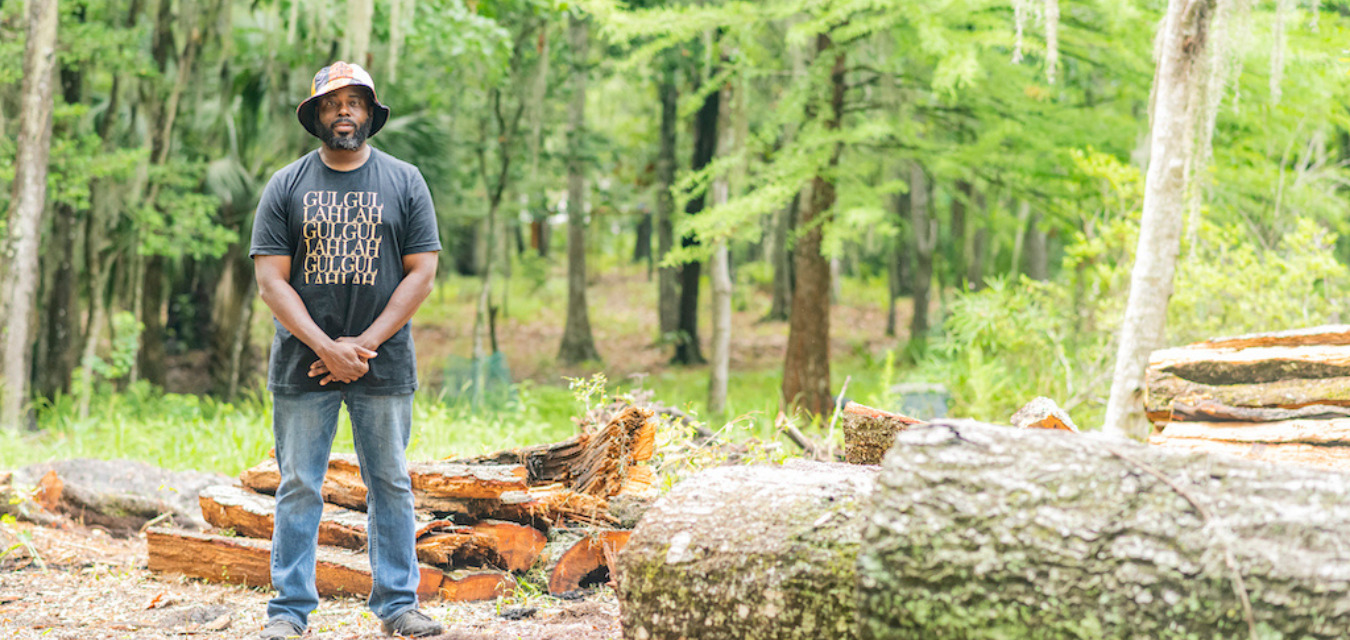In building a bridge to the past, Gullah chef BJ Dennis digs deep to get the story right
“It smells like Senegal in here,” said Jessica B. Harris, author of the New York Times best selling book-turned-Netflix series, High on the Hog (Bloomsbury USA, 2012), when she walked into chef BJ Dennis’ home. Dennis, a Gullah chef and culinary historian who’s featured in the second episode of the series, had prepared steamed mustard greens, sautéed asparagus and sugar snap peas, stewed lamb, and red rice for Harris’ arrival.
The secret sauce to Dennis’ highly praised meals is veneration. It’s traveling back in time, centuries even, to honor the ways his West African and Gullah ancestors, respectively, nourished themselves. And as much as he is a chef, he’s also a teacher. He’s created somewhat of an omnipresence over his career. In addition to television appearances, he also has a publishing deal with Penguin Random House (his forthcoming book will be out in 2023) and can be found cooking and catering for various events throughout the Lowcountry. Through conversation and culinary arts, the Gullah chef makes sure that by the time you finish your plate, your page, or the episode, you know better.
One of the ways he does this is by dismantling the long-held presumptions about certain Gullah Geechee traditions. Take rice, for instance. The Gullah eat rice with every meal, so they say. While that might be true today, it wasn’t always so, Dennis notes. Eating rice with most home-cooked meals is a somewhat recent cultural phenomenon. That’s not only the truth for Gullah people, however. Rice is one of the few crops that changed the dynamic of the world’s foodways. So most cultures are eating more rice than they historically ever have before. For the Gullah, particularly, there is so much more to the food culture.
Rice became the major cash crop in South Carolina in the early eighteenth century. In fact, it made the city of Charleston, per capita, the wealthiest city in the nation. The entry point for most enslaved Africans, nearly 60 percent of them came through the port of Charleston, whose landscape mirrored that of Mother Africa.
Before being forced to grow rice, cotton, indigo, and other cash crops on plantations in the Carolinas, Georgia, and Florida, Gullah Geechee ancestors lived in various countries in West and Central Africa. They brought their memories, traditions, language, and food ways with them. That included rice. In fact, many Senegalese farmers were targeted for enslavement because of their rice-growing skills. That’s because, by the 1720s, a rice industry had developed in South Carolina.
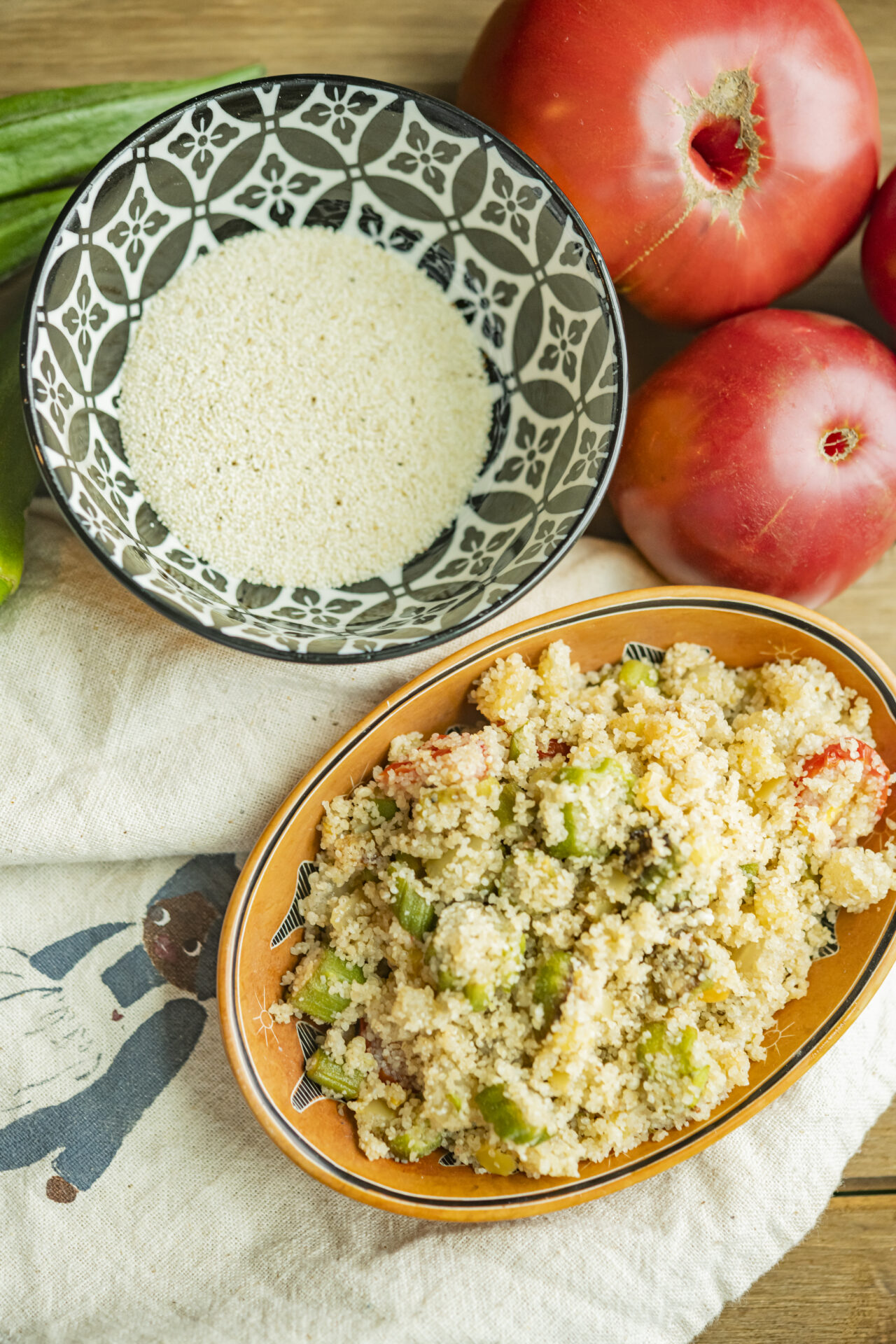
“We brought so much more to the table, though,” Dennis explains. “But because rice was monetized and made the area so wealthy, people became enamored by it. Even when rice was the mainstay, many of our Gullah ancestors grew millet, sorghum, and fonio (an African grain) for personal consumption. I learned from many of my elders, including my own grandfather, as well as books like Behind God’s Back (Evening Post Books, 2019), a story about Cainhoy, Wando, Huger, Daniel Island, and St. Thomas Island that, before the 1960s or so, rice was mostly eaten on Sundays and special occasions.”
First Hand Research on Historic Foodways
While visiting various West African countries, including Benin in 2019 and Senegal in 2020, Dennis learned that rice was sacred in his ancestral home, symbolizing fertility and prosperity. “It was celebrated, particularly among the Jola people in Casamance, a region in Senegal,” Dennis shares.“When I visited the royal family, I was gifted rice, which I still have. Our ancestors brought that belief of its sacredness with them, which played a role in why they didn’t eat it nearly as often as we do today.”
Even red rice is a fairly new construct. “Tomatoes weren’t even introduced to Africa until the sixteenth century. True red rice is the ancient orzogla berrima, an indigenous West African crop that’s actually red,” Dennis explains.
“Our ancestors grew glaberrima here, too. What we call red rice today, I call tomato purloo to honor the distinction. But whether you call it red rice or tomato purloo, it’s cooked the exact same way as joll of rice in West Africa—stewed down with tomatoes, meat, and various spices, resulting in a fluffy, flavorful one-pot meal. Enslaved Africans created a cuisine that took the techniques, and, many times, the same ingredients, that some remembered from West Africa because they had been there while others remembered because they saw older folk doing it.”
Many of these foodways continue today, but Dennis notes, “We lose tradition with each generation.”
We’re not growing corn and taking it to the mill to have grits and cornmeal made. Most of us don’t even know where our corn was grown or processed before packaging. We don’t know what body of water our fish and crab were taken from. Farmers aren’t growing nearly as many varieties of vegetables. As a result of industrialization, which placed greater emphasis on convenience for the buyer and seller, along with sharecropping—an off shoot of slavery—many Gullah farmers became truck farmers. That is, “they went from growing varieties of vegetables to, for instance, harvesting and selling rows and rows of only cabbage. So, in addition to losing tradition with each generation, we also lost flavor, nutrients, and diversity in our seeds,” Dennis says.
“And we’re frying our food more than ever. We didn’t fry much back then,” Dennis recalls. “As much as fried chicken is aligned with Black history, it did not originate with us. It was a Scottish recipe. Mainly, we stewed meat, smoked, or dried it. My dad ate mostly stewed fish. We’d also take the shrimp heads and dry then powder them and use it to thicken and season dishes like okra soup.”
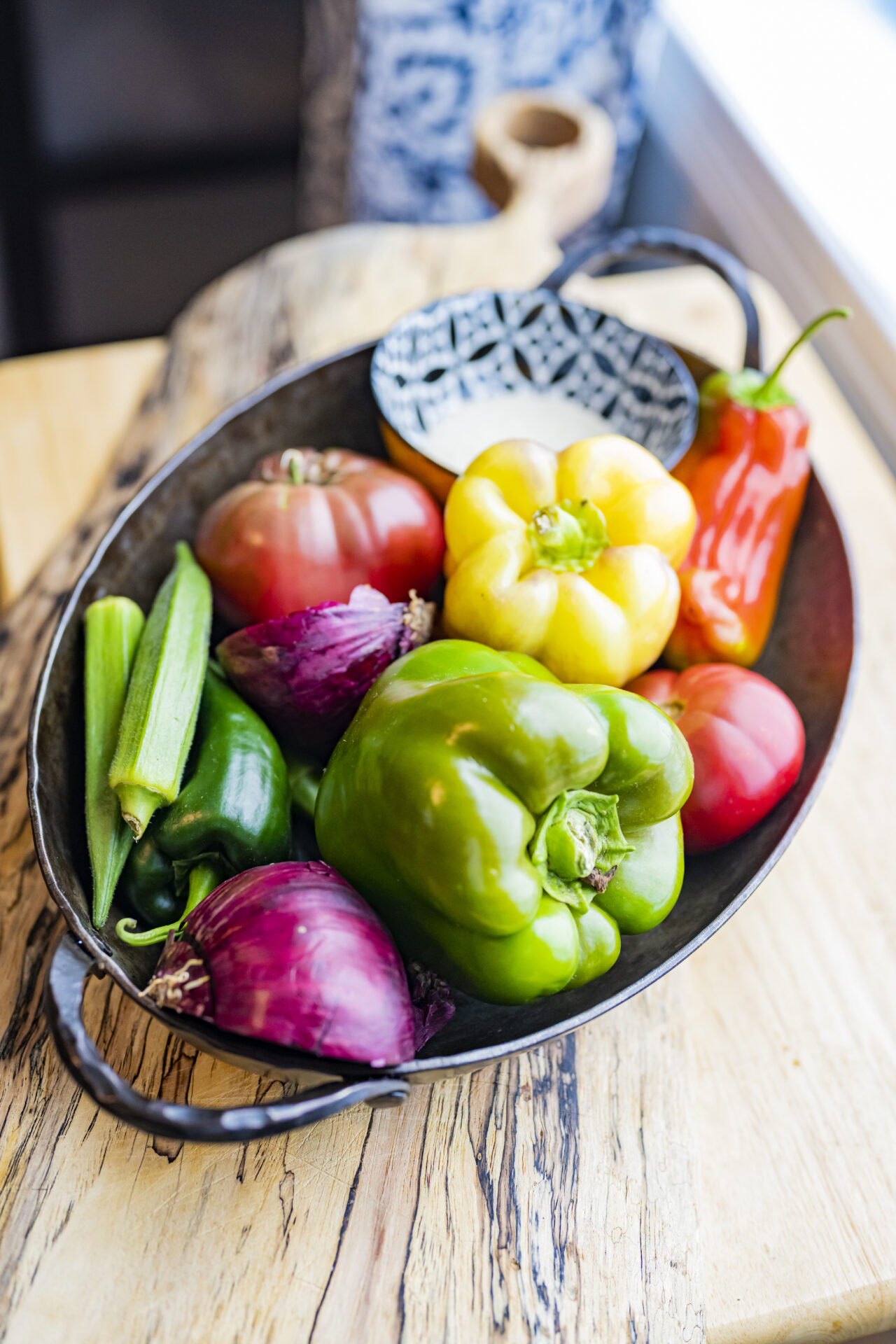
Though we once had a handful of different kinds of okra, the crop is still one to have survived the test of time. Another is the benne seed, more commonly known as the sesame seed. These, Dennis says, “you now see only in sweets, but our people used it in soups and stews. Even today in Charleston cuisine, you most likely find benne seeds in recipes for cookies. But coming from West Africa, the Gullah knew that the pods of benne seed were protein supplements and could even be fermented to make ogiri, a nutritious paste used for flavoring, which is still being made in West Africa.”
Before the 1960s, vegetables dominated the plate. As a result of the task system, which was popular on South Carolina plantations because it was believed to make the slave more comfortable and less likely to run away, enslaved Gullah Geechee people were allowed to maintain personal small gardens as well as sell and barter in their free time. While they were also allowed to hunt, fish, and trap, meat wasn’t usually in abundance. The little meat they did have was usually cooked in the beans and vegetables for a boost in flavor but also to stretch the small provisions. That’s where you get the ham bone cooked in the butter beans and the piece of smoked meat cooked into the greens.
A Gullah dish called “soup bunch” is an example. “Soup bunch doesn’t get the love that many other iconic Gullah Geechee dishes do, but it’s one that tells an important story of how our ancestors were the ones who kept the city nourished with veggies and other staples,” Dennis says. “A one pot stew of greens, root vegetables, onion, smoked meat of choice, herbs, and spices. Or they’d just mix up different greens, so you’d have mustard, turnips, and collards cooking together in one pot.”
And the greens today have nothing on the greens back then. In fact, in her book Living By the Word (Amistad, 1989), author Alice Walker shares that, along with the shift from farming and gardening to supermarket shopping, the quality of food declined. “The United States should have closed down and examined its every intention, institution, and law on the very first day a Black woman observed that the collard greens tasted like water,” she wrote. “Or when the firstperson of any color observed that store-bought tomatoes tasted more like unripened avocadosthan tomatoes.”
That’s why, upon returning to Charleston in 2008 from a four-year stay in the Virgin Islands, Dennis made it his business to connect with as many local farmers and fishermen as he could find. He’d grown to understand that real soul food nourished the mind, body, and spirit. It shouldn’t only be good to you, but it should also be good for you.
“Terms like organic and farm-to-table ain’t nothing new to us. Our food has long since been fresh and free of toxic fertilizers and pesticides.” There’s almost always a historically healthier option, and Dennis almost always knows exactly what that alternative is.
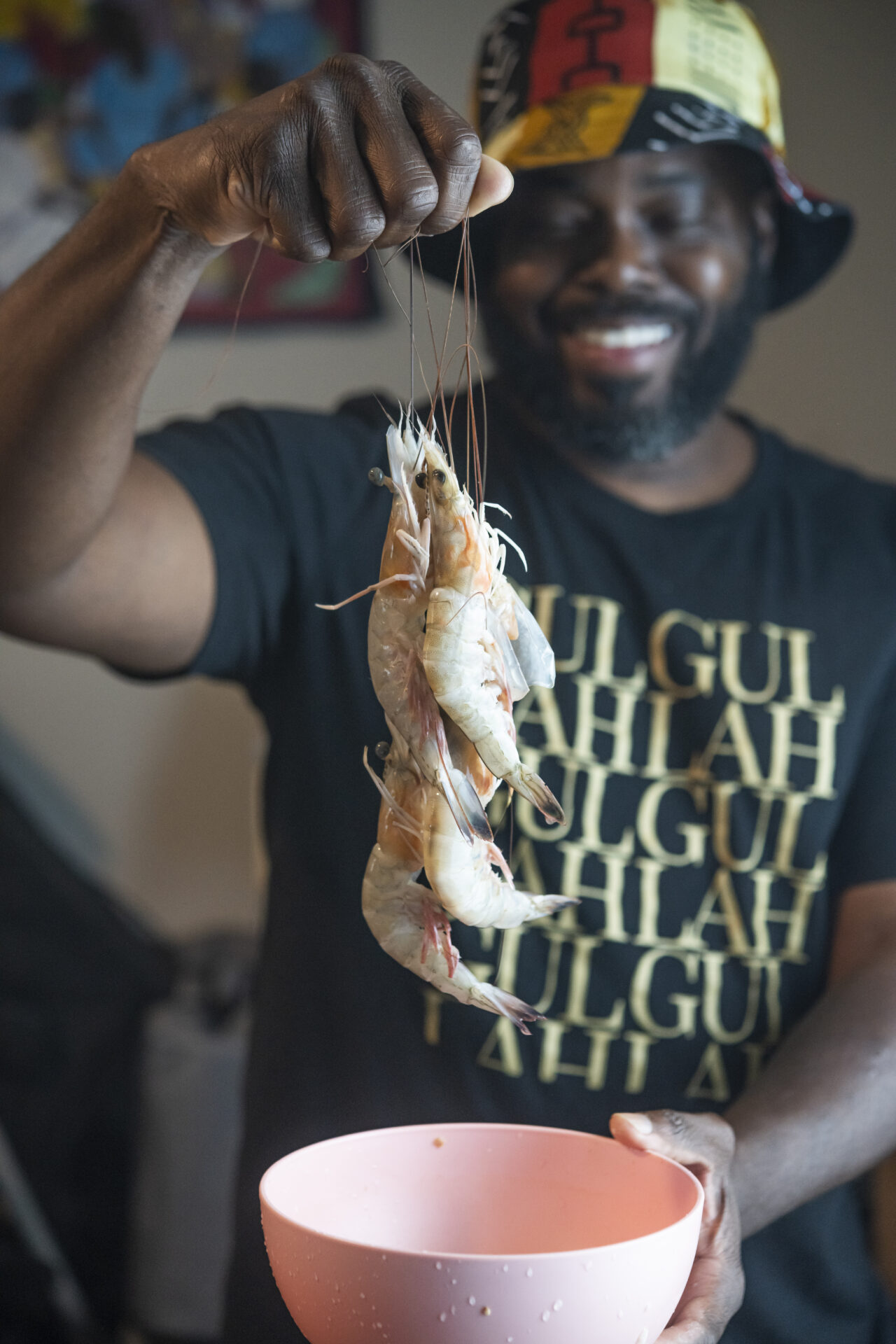
Dennis explains history like he was there. Taking it back to soup bunch, for instance, he shares how “Gullah women on the islands—James Island, in particular—would gather the leftover greens and root veggies from various farms, and package them in a bunch. They would cross the river in their boats and sell them in the city. So while trying to earn income for their families, they were also taking care of an entire city. In those days, there was no grocery store. So you would have to buy veggies and protein almost everyday if you wanted to eat. The main supplier of vegetables were Gullah Geechee vendors, before and after emancipation.”
Dennis’ food mirrors his pedagogy. It takes you back, which is what griots do. They keep the culture and its history alive and well through their art, their teachings, and their stories. While many chefs look ahead to further modernize their dishes, Dennis observes the old ways by reintroducing combinations such as spinach and oysters, which cocks some heads in confusion while comforting others in nostalgia. It’s doing more chopping than shaking for seasoning. And it’s cooking with cast iron outside on an open fire, something that Dennis has become known for as of late.
“When the fire burning and the sun scorching, it ain’t no joke. But I love it. Not many can cook over dem coals in the elements. But ain’t nothin’ like it, especially when you cooking on Gullah Geechee-owned land,” he says. “One of my favorite meals is a simple broiled, well-seasoned piece of fish seasoned with sea salt and a hot pepper spice blend from Ghana, a touch of butter with a hint of spicy garlic pickle juice in the cast iron skillet as a basting sauce. Or seasoned with the same ingredients except cold-pressed okra seed oil instead of butter and a touch more of the pepper seasoning.”
Whether on his social media page, in his upcoming cookbook, on television, or through his sold-out cooking events, the Gullah griot makes it his business to acknowledge which narrative is true, which is partially true, and what’s totally inaccurate. He dismantles myths in an effort to ensure that we know how to properly feed our minds and bodies today by understanding how our people took care of themselves yesterday. He’s a bridge between the old and the new and a blessing for all who cross paths with him.
Recipes From BJ Dennis’ Roots
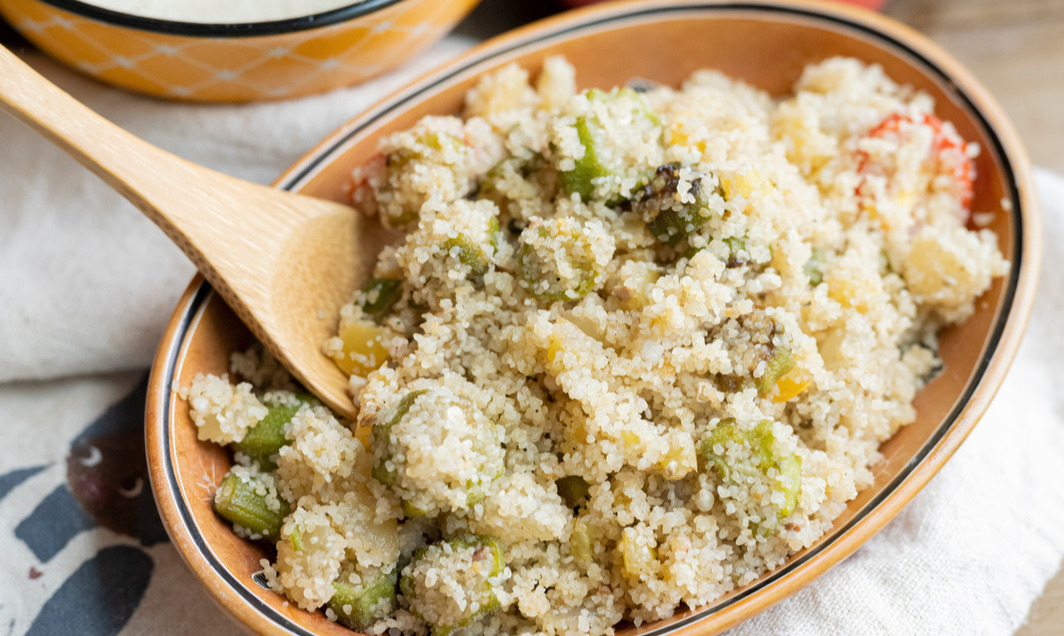
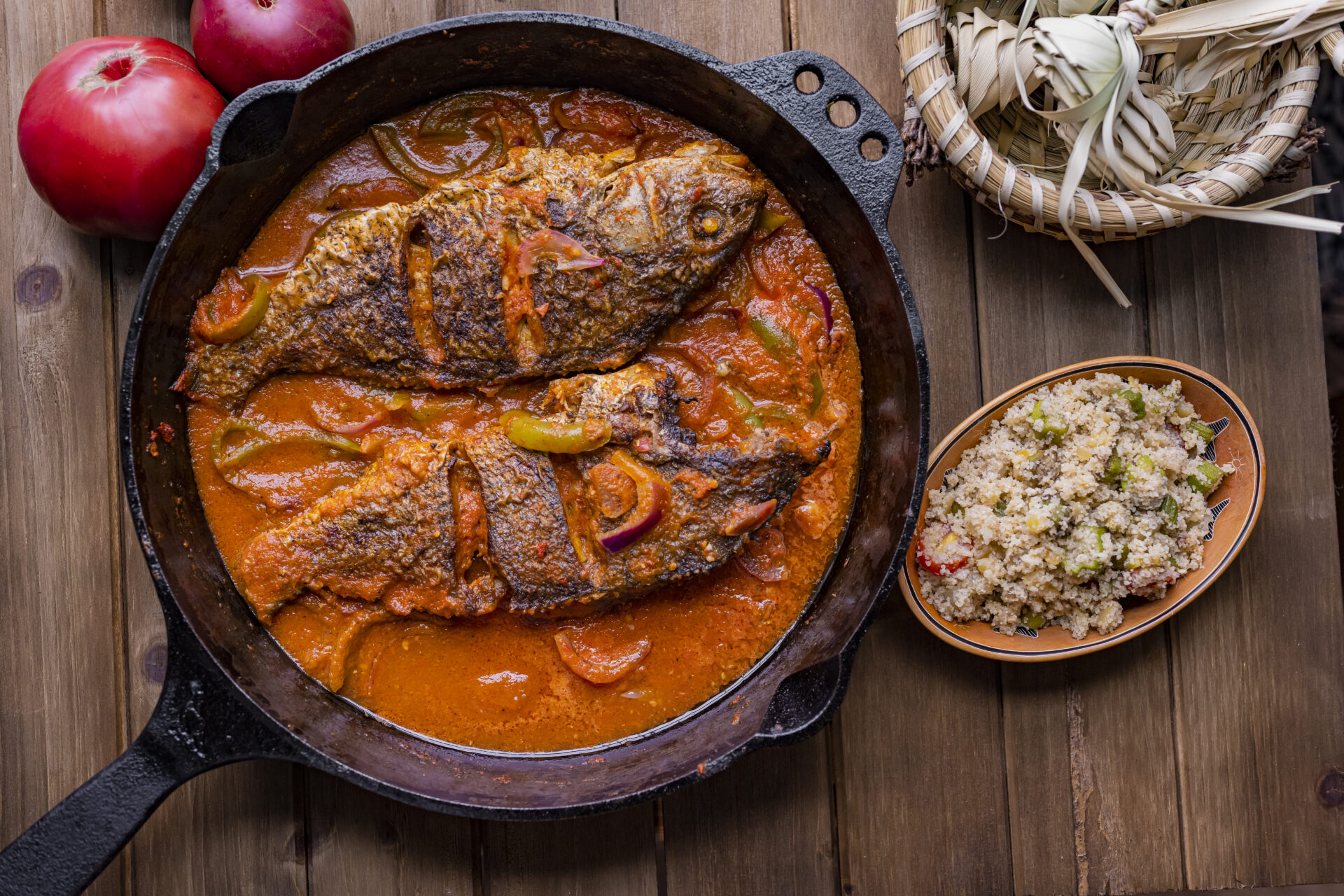
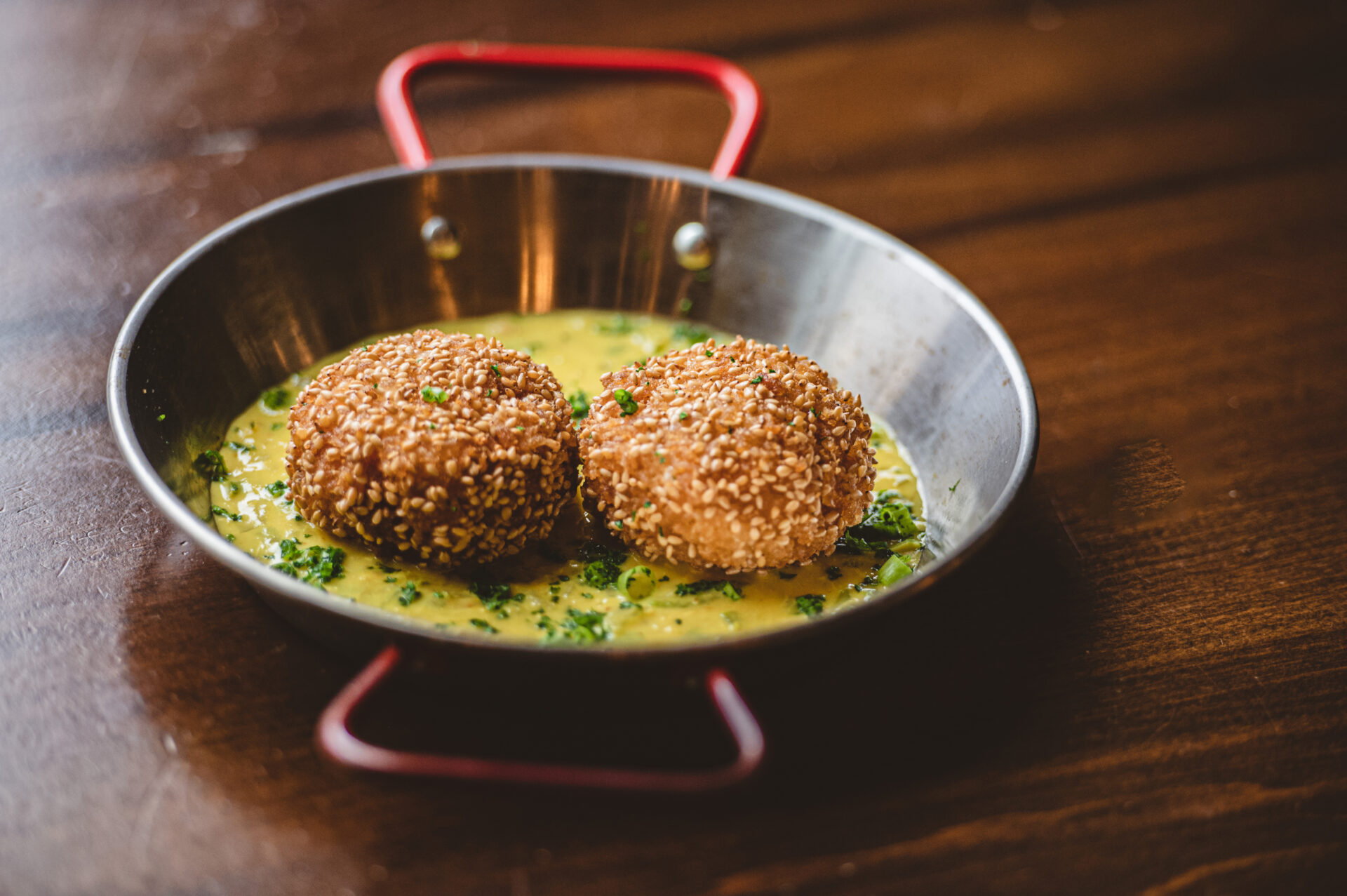
share
trending content
-
New Restaurants in Arkansas
-
Shrimp and Grits: A History
by Erin Byers Murray -
Tea Cakes, A Brief History
by TLP Editors -
Gullah Geechee Home Cooking
by Erin Byers Murray -
A Cajun Christmas Menu
by TLP Editors
More From Roots
-
The Pakalachian Food Truck Blends Traditions | Listen
-
Treasuring Time at the Table at a’Verde
-
Remembering Malinda Russell through her Recipes
-
Ricky Moore’s Juneteenth Lunchboxes
-
Hamsa: All Roads Lead to Israel





